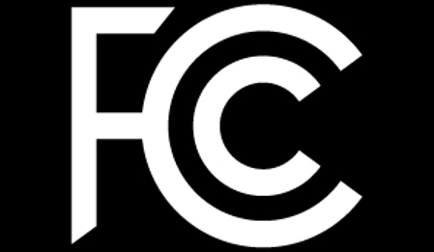FCC Seeks Comment On National Reach Cap
WASHINGTON—The Federal Communications Commission today adopted a Notice of Proposed Rulemaking to review its National Television Multiple Ownership Rule by a 3-2 vote along party lines.
The vote came after the agency’s open monthly meeting was interrupted as FCC Chairman Ajit Pai was speaking before the commissioners vote to repeal Obama-era net neutrality rules.
“On advice of security, we need to take a brief break,” Pai said before the livestream of the event went to a slide of the FCC logo.

A CBS News report said the room was cleared. A Tweet from Dave Lee, BBC’s North American technology reporter, said sniffer dogs searched the meeting room after it was evacuated. The meeting and the livestream resumed a few minutes later.
In the NPRM on its National Television Multiple Ownership Rule, the agency is seeking comments on its cap on national television audience reach and its UHF discount rule. Currently, entities owning or controlling TV stations are prohibited from more than 39 percent of the TV households in the country. The UHF discount, which provides for a 50 percent reduction in the size of UHF audiences for the purpose of calculating compliance with the 39 percent rule, is also part of the rulemaking.
The NPRM is aimed at assessing the national audience reach cap in an era of increased options for consumers to access video programming from a variety of new platforms.
The notice seeks comment on several questions, including:
Get the TV Tech Newsletter
The professional video industry's #1 source for news, trends and product and tech information. Sign up below.
· Whether or not the agency has authority to modify or eliminate its national audience reach cap;
· If so, should it retain the cap;
· How marketplace changes and other factors should be considered in the context of modifying or eliminating the dap;
· At what level should the cap be set;
· How should compliance with the cap be calculated;
· Whether or not the UHF discount should be modified or eliminated; and
· Whether the existing cap is still needed to promote localism.
Commissioners Mignon Clyburn and Jessica Rosenworcel, who dissented, both expressed that eliminating or modifying the cap would be detrimental to the values of localism, diversity and competition.
“Today, the FCC seeks to dismantle these values,” said Rosenworcel. “At the direction of Congress in the Consolidated Appropriations Act of 2004, the FCC is statutorily prohibited from allowing a single company from acquiring stations that reach 39 percent of the national television audience.”
However, in his comments before the vote, Pai asserted that the cap and the UHF discount are inextricably linked. “Any review of one, must include a review of the other,” he said. There are no tentative conclusions about whether or not the FCC has authority to eliminate or adjust the cap nor any about the UHF discount in the notice, said Pai.
“It is amusing then to hear such vociferous objections from this bench,” he said. Pai pointed out that in 2013 the FCC adopted an NPRM which eliminated the UHF discount. It has since been restored by this Commission.
Quoting that NPRM, Pai said: “We believe the Commission retains the authority both to modify the national audience reach restriction and the UHF discount provided such action is undertaken in a rulemaking proceeding separate from the Commission’s quadrennial review of the broadcast ownership rules.”
“Today’s minority expressed nary a doubt about that belief back then,” he said.
The FCC today also added an optional EAS alert code for use in situations involving the death or injury of police officers. Called a Blue Alert, the “BLU” code can be used by state and local emergency agencies to alert the public to threats to law enforcement personnel and to help apprehend suspects. Use of the new EAS alert code by emergency agencies and broadcasters is voluntary. The FCC is providing 12 months to implement Blue Alerts to be delivered over the Emergency Alert System and 18 months for delivery via the Wireless Emergency Alert system.
See "GOP-Led FCC KO's Title II" by B&C for net neutrality coverage.
Phil Kurz is a contributing editor to TV Tech. He has written about TV and video technology for more than 30 years and served as editor of three leading industry magazines. He earned a Bachelor of Journalism and a Master’s Degree in Journalism from the University of Missouri-Columbia School of Journalism.

